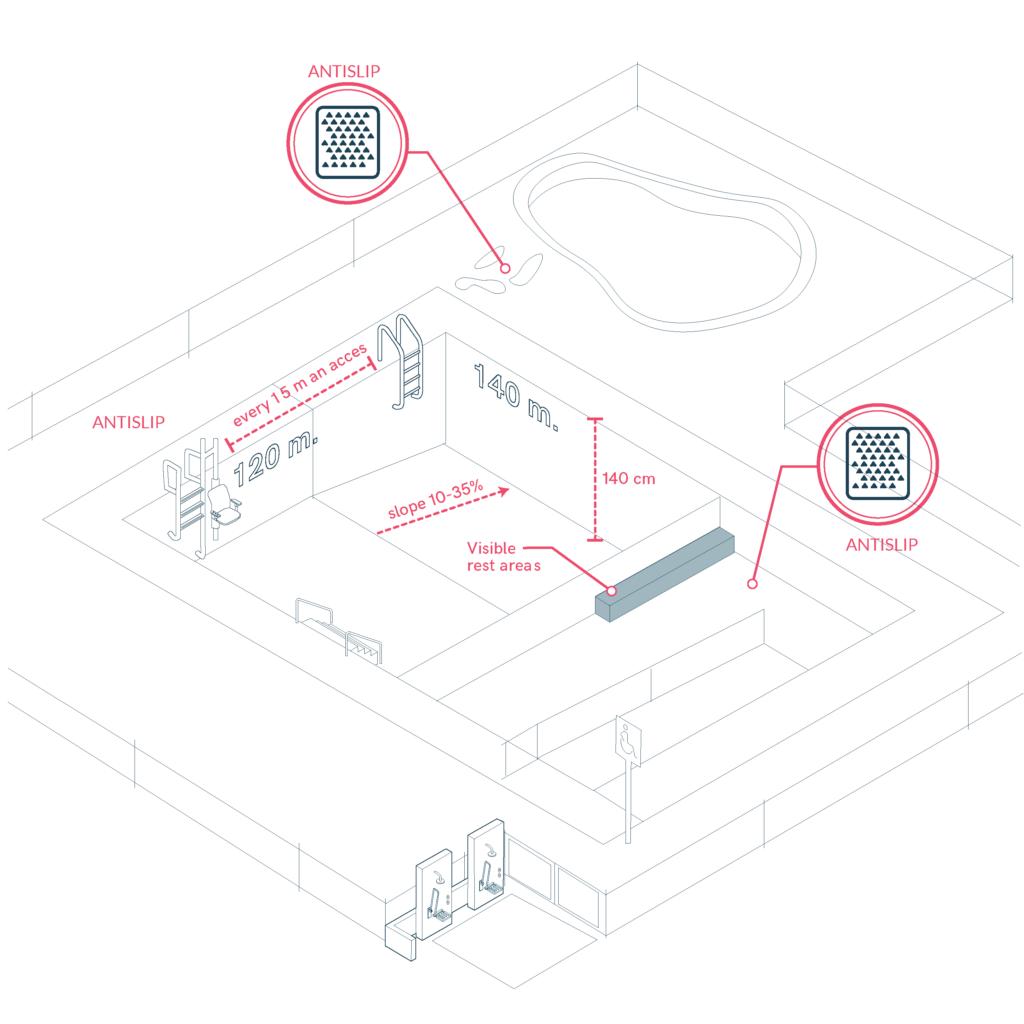Accessibility in Swimming Pools
To ensure the inclusion of all individuals in aquatic spaces, it is essential that swimming pools — including children’s pools — feature accessible design. This not only allows for equitable enjoyment of facilities but also reduces risks and enhances the safety of users of all ages. Accessibility must consider different types of pools, offering appropriate solutions for access and mobility for individuals with disabilities or reduced mobility. The following are key recommendations to achieve accessible and safe swimming pools for everyone, including young children.

- All pools — including swimming pools, children’s pools, wave pools, lazy rivers, sand-bottom pools, and spas — must be accessible to all users.
- Flooring should be light-coloured and non-slip to reduce the risk of falls, especially in wet and high-traffic areas.
- There should be multiple entry options such as steps, lifts, stairs, and ramps to accommodate diverse mobility needs.
- Submerged wheelchairs, grab bars at all access points, and good visibility throughout the area are essential for safety and autonomy.
- A protective barrier of at least 1.2 metres in height should enclose all outdoor pools, including children’s pools, to prevent accidents.
- In accessible zones, the maximum depth should not exceed 1.4 metres, and shallow areas should be available for users who require them.
- Pool depth must be clearly indicated on the walls to assist all swimmers with orientation and safety.
- The bottom of the pool should be constructed with light-coloured, non-slip materials to enhance visibility and reduce slipping.
- Steps must have non-slip treads, rounded edges, and be spaced no more than 15 metres apart to ensure consistent support.
- Slopes within the pool must remain within safe limits (10% to 35%, depending on pool type) to ensure gradual and secure access.
- Visible rest areas should be incorporated into the pool design using contrasting colours, benefiting users who need frequent breaks or visual cues.
